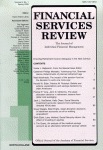Adverse Selection, Search Costs and Sticky Credit Card Rates
DOI:
https://doi.org/10.1016/S1057-0810(97)90032-9Abstract
Several scholars offinancial economics observed that during the 1980s, market interest rates declined continuously with little or no impact on credit card rates. Recently, Mey- ercord (1994), Sinkey and Nash (1993), and Sullivan and Worden (1995) recorded sigmficant changes in the credit card market intffcating an increased level of competi- tion. This study represents an attempt to determine the sensitivity of credit card rates to the costs offunds in the U.$. economy. The evidence from the Johansen Cointegration test confirms that credit card rates and cost offunds possess a long-run equilibrium relationship with one another. Furthermore, the results of the error correction models are indicative of a sluggish rate at which credit card interest rates adjust to the costs of funds. Between 1982 and 1994, credit card rates adjust to changes in the cost offunds at about 15 percent per quarter. These results represent anecdotal evidence for the validity of adverse selection, search and switch costs explanations that have been discussed in the financial contracting literature.
Downloads
Published
How to Cite
Issue
Section
License
Copyright (c) 1997 JAI Press Inc.

This work is licensed under a Creative Commons Attribution-NonCommercial 4.0 International License.
Author(s) retain copyright and grant the Journal right of first publication with the work simultaneously licensed under a Creative Commons Attribution-NonCommercial 4.0 International License that allows to share the work with an acknowledgment of the work's authorship and initial publication in this Journal.
This license allows the author to remix, tweak, and build upon the original work non-commercially. The new work(s) must be non-commercial and acknowledge the original work.


